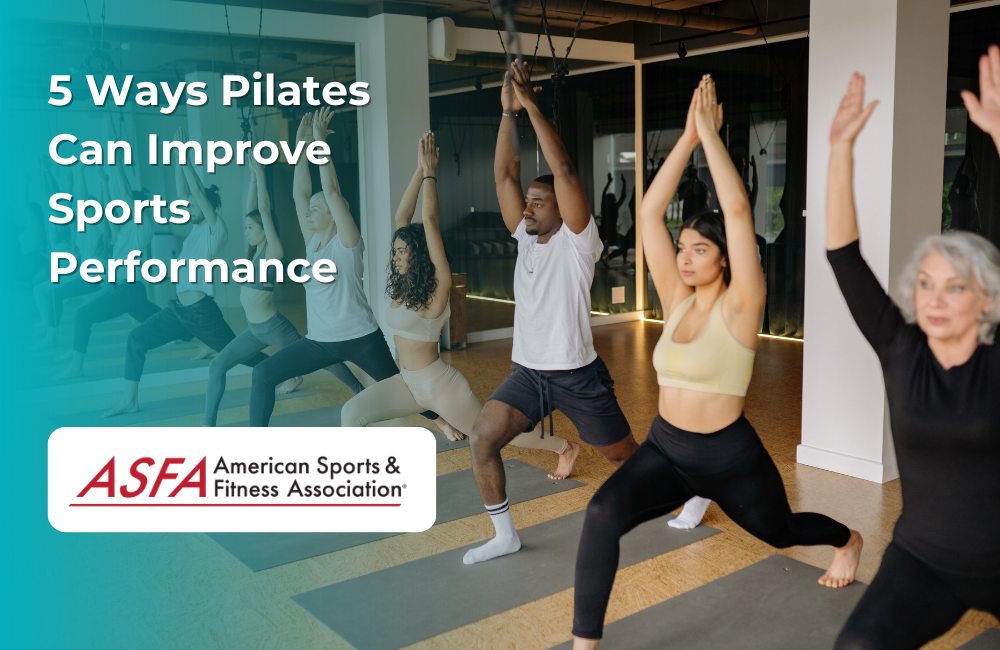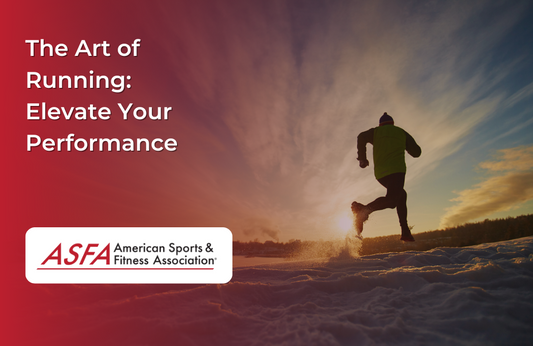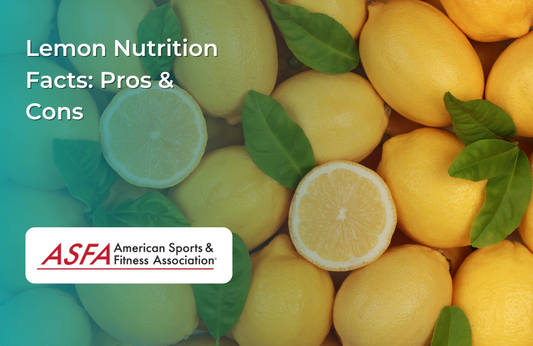Athletes train with intensity, precision, and discipline, all in pursuit of peak performance. However, true athletic excellence isn’t just about raw power or speed; it requires a finely balanced combination of strength, flexibility, endurance, coordination, and mental focus. While many coaches traditionally emphasize high-intensity workouts to reach these goals, more elite athletes are incorporating lower-intensity yet highly effective practices like Pilates into their training for enhanced performance. This exercise method complements high-intensity training by enhancing flexibility, core strength, and mental clarity—essentials for any sport. Here’s how a Pilates workout can help elevate sports performance.
Understanding Pilates for Athletes
Pilates is more than just a workout; it’s a holistic approach to fitness that emphasizes the connection between the mind and body. Developed by Joseph Pilates in the early 20th century, this exercise method focuses on strengthening the core muscles, improving flexibility, and enhancing body awareness. For athletes, incorporating Pilates exercises into their training regimen can lead to significant improvements in performance and overall well-being.
What is Pilates?
At its core, Pilates is a low-impact form of exercise that targets the abdominal muscles, back muscles, and pelvic floor. The movements are designed to be both challenging and accessible, making Pilates suitable for athletes of all levels. By engaging in a series of controlled, precise movements, athletes can improve their strength, flexibility, and body awareness. This heightened awareness of body position and movement patterns is crucial for optimizing performance and preventing injuries.
Benefits for Athletic Performance
Pilates training offers a multitude of benefits that can enhance athletic performance:
-
Improved Core Strength: Pilates exercises are specifically designed to target the core muscles, which are essential for stability, balance, and power. A strong core enables athletes to perform movements with greater efficiency and control.
-
Enhanced Flexibility: Flexibility is a key component of athletic performance. Pilates helps to increase flexibility and range of motion, reducing the risk of injury and improving overall performance.
-
Better Body Awareness: Pilates promotes body awareness, allowing athletes to develop a greater understanding of their body position and movement patterns. This awareness is crucial for executing precise movements and maintaining proper form.
-
Injury Prevention: One of the significant benefits of Pilates is its ability to identify and address muscle imbalances. By correcting these imbalances, athletes can reduce the risk of injury and improve their overall performance.
1. Increases Flexibility for Enhanced Agility
Athletes in sports like soccer, football, and sprinting often deal with tight muscles, particularly in the hamstrings, calves, and hip flexors. This tightness restricts range of motion, leading to reduced agility, which can hinder performance and increase injury risk. the Pilates method focuses on slow, controlled stretching and muscle engagement, helping to elongate muscles without placing excessive strain on joints or connective tissues.
Dynamic Flexibility for Quick Movements
Through exercises like leg circles, spinal twists, and hamstring stretches, Pilates works on flexibility across multiple planes of motion, preparing athletes for the dynamic, often unpredictable movements required in sports. Pilates equipment, such as the reformer, enhances this flexibility by allowing for controlled, multi-directional movements. This improved flexibility means quicker, more fluid movements—essential for sidestepping opponents, changing direction quickly, or extending a reach.
Specific Benefits for Rotational Sports
For athletes in rotational sports like golf, tennis, and baseball, upper body flexibility is crucial. Pilates strengthens muscles involved in rotation, especially around the spine and shoulders, while increasing mobility in the thoracic region. The result? A smoother, more powerful swing or throw, with less risk of muscle strain.
2. Builds Endurance Through Controlled Breathing and Core Strength
Endurance is more than just physical stamina; it includes efficient breathing and oxygen utilization, factors that Pilates addresses directly through exercises that enhance muscle strength. Unlike many workout routines that overlook the importance of breath, Pilates places breathing at the core of every movement. By mastering breathing techniques, athletes can sustain energy, maintain focus, and stay calm during intense play.
Oxygen Efficiency for Stamina
Pilates breathing techniques help increase lung capacity and oxygen efficiency, a game-changer for endurance sports like cycling, running, and swimming. Deep, controlled breathing improves blood flow, allowing athletes to perform for longer without fatigue. It also reduces recovery time between high-intensity intervals, allowing them to return to action quicker.
Muscular Endurance for Lasting Strength
Pilates emphasizes time under tension, where muscles are engaged in low-impact, controlled movements for extended periods. This approach builds muscular endurance, especially in the core and lower body. For example, exercises like plank variations and leg lifts help strengthen the stabilizing muscles that keep athletes grounded, enabling them to maintain power and control throughout a game or race.
3. Creates and Restores Balance to Prevent Injury
In most sports, muscle imbalances are inevitable. For instance, soccer players might have overdeveloped quadriceps from frequent sprinting, while runners often have tighter hamstrings. A consistent Pilates practice improves balance and prevents injuries by promoting even muscle development. This uneven muscle development can lead to poor posture, reduced mobility, and, over time, injuries. Pilates, with its focus on balanced movement patterns, can address these imbalances.
Proprioception and Body Awareness
Pilates teaches body awareness by engaging the core and stabilizing muscles during every movement. This enhances proprioception—the sense of where your body is in space—which is essential for balance and coordination in sports. Athletes trained in Pilates develop a keen sense of their bodies and body position, helping them move more gracefully, avoid stumbles, and perform with fluid control.
Correcting Muscle Imbalances
Rotational athletes like tennis players or golfers, who often rely on one side of their body, benefit significantly from Pilates. Movements that balance the use of both sides of the body help realign the spine and strengthen weaker muscles. For example, exercises that alternate between left and right-side engagement help prevent overuse injuries while improving symmetry, ensuring athletes can move smoothly in any direction.
4. Builds Core Strength for Power and Stability
A strong, stable core is the foundation of athletic movement. Whether sprinting, jumping, swinging, or tackling, core strength enables athletes to generate power, maintain balance, and resist force. Pilates emphasizes deep core engagement in every movement, often referring to the core as the "powerhouse" of the body.
Enhancing Power Generation
For athletes in contact sports like football or rugby, core stability enables them to withstand impact while maintaining balance. Core-focused exercises such as the Pilates roll-up, double leg stretch, and side plank not only strengthen the abdominal muscles but also build stability in the hips and lower back, creating a foundation for explosive movements.
Stabilizing the Spine and Pelvis
Lower back pain and injuries are common among athletes, often stemming from poor core strength. Pilates exercises target not only the superficial abs but also deep stabilizing muscles like the transverse abdominis and pelvic floor. Strengthening these muscles reduces strain on the spine and pelvis, minimizing the risk of injuries and helping athletes stay in optimal form.
5. Aids in Recovery and Rehabilitation
For athletes, recovery is just as crucial as training. Restorative practices like Pilates accelerate recovery by promoting blood flow, releasing muscle tension, and improving joint mobility. Athletes can experience quicker recovery times and lower injury rates by incorporating Pilates as a part of their post-training or post-competition routine.
Low-Impact Movement for Injury Prevention
Pilates movements are low-impact and gentle on the joints, making them ideal for recovery and injury prevention. Exercises such as the single-leg stretch, shoulder bridge, and seated spinal twist help relieve tension, ease muscle soreness, and increase circulation. For injured athletes, Pilates serves as a rehabilitative tool, allowing them to maintain strength and flexibility without aggravating their injuries.
Reducing Post-Game Stiffness and Fatigue
After the high intensity of game day, athletes often experience stiffness and fatigue, especially in overworked muscles. Pilates’ slow, controlled movements help reset the body, easing muscle tightness and relieving aches. Stretching and lengthening exercises are particularly beneficial for reducing delayed onset muscle soreness (DOMS) and preparing athletes for the next training session.
Longevity and Career Extension
For athletes, longevity in their careers is often a top priority. Pilates can play a crucial role in extending an athlete’s career by reducing wear and tear on the body. By focusing on core strength, flexibility, and body awareness, Pilates helps athletes perform at a higher level for longer periods.
A strong core provides the foundation for all athletic movements, reducing the strain on other parts of the body. Enhanced flexibility ensures that muscles and joints remain supple and less prone to injury. Improved body awareness allows athletes to move more efficiently, reducing the risk of overuse injuries and ensuring that they can continue to compete at their best.
Incorporating Pilates into an athlete’s training regimen is not just about immediate performance gains; it’s about building a sustainable, long-term approach to fitness and health. By practicing Pilates regularly, athletes can enjoy the benefits of improved performance, reduced injury risk, and a longer, more successful career.
Pilates for Mental Focus and Resilience
Beyond the physical benefits, Pilates training has a positive impact on mental resilience and focus. A consistent Pilates practice enhances mental focus and resilience by promoting mindfulness and controlled breathing. It teaches athletes to concentrate on breathing, body alignment, and controlled movement, all of which require a high level of focus and discipline. This mental training can translate to the field, where athletes must maintain composure and clarity, especially under pressure.
Mindfulness and Stress Reduction
Athletes face significant mental demands, from training pressures to the stress of competition. Pilates provides a mental reset, allowing athletes to connect with their bodies and relieve stress. By focusing on breathing and mindful movement, Pilates helps athletes develop a calmer mindset, better their mind body connection, equipping them to manage game-day nerves and maintain focus during critical moments.
Improved Reaction Time and Decision-Making
A sharp mind is essential for quick reactions and split-second decision-making in sports. Pilates trains both body and mind, helping athletes sharpen their focus and develop a heightened awareness of their movements. This increased mental agility translates into improved athletic performance with quicker responses and more precise movements on the field, court, or track.
Getting Certified in Pilates for Athletes
For athletes and trainers looking to deepen their understanding of Pilates, the American Sports & Fitness Association (ASFA) offers two valuable certifications: Pilates Certification and Advanced Pilates Certification. These certifications not only build practical skills for athletes but also equip fitness professionals to work effectively with clients looking to enhance sports performance through Pilates. Whether you’re new to Pilates or experienced and ready to advance, ASFA’s flexible, online certification courses are ideal for mastering the techniques to improve flexibility, balance, core strength, and recovery for optimal athletic performance.
Conclusion: Pilates as a Vital Tool for Sports Performance
Incorporating Pilates into an athletic training program provides benefits far beyond the usual gains of strength and speed. From flexibility and balance to core strength and mental clarity, Pilates brings a unique, well-rounded approach to fitness. Athletes who incorporate Pilates enjoy better control over their bodies, quicker reflexes, reduced injury rates, and improved recovery times.
Pilates isn’t just an one exercise program; it’s a comprehensive approach to physical and mental conditioning that every athlete can benefit from. Ready to elevate your game? Consider adding Pilates to your routine and experience firsthand how this low-impact, high-reward practice can bring out the best in your athletic performance.
For those who want to take their Pilates journey further, explore ASFA’s certifications and start unlocking the transformative power of Pilates for yourself and others. The path to peak performance begins here.




